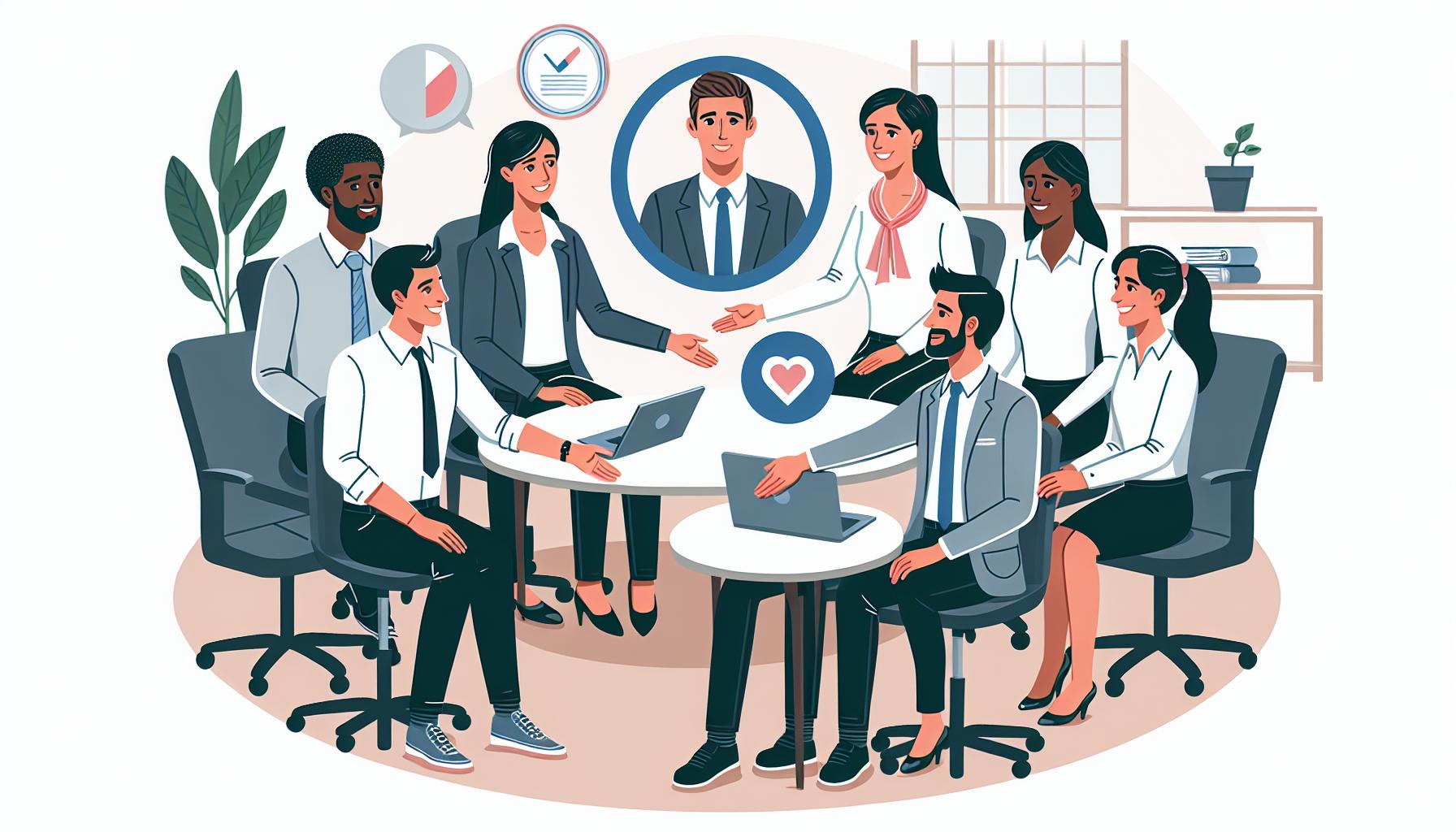Diving into “Awakening Compassion at Work” by Monica C. Worline and Jane E. Dutton is like finding a roadmap to the heart of what makes organizations truly great – compassion. It’s not just about being nice; it’s about creating a culture where everyone feels seen, understood, and valued. And let me tell you, it’s a game-changer.
Why should you listen to me, Mike Piet, on this? Well, I’ve spent years navigating the trenches of corporate culture, dissecting what works and what doesn’t. My journey has shown me the power of compassion in transforming not just the workplace but the bottom line too. I’ve seen firsthand how it fosters innovation, collaboration, and resilience.
Here are three key takeaways from this guide: First, compassion isn’t a luxury; it’s a necessity for thriving organizations. Second, it starts with leadership but must permeate every level of an organization. And third, cultivating compassion requires intentional practice and commitment. Stick around, and I’ll show you how to weave these insights into the fabric of your workplace.
The Importance of Compassion in the Workplace
Reading through “Awakening Compassion at Work” by Monica C. Worline and Jane E. Dutton, it struck me how often we underestimate the power of compassion in our everyday work life. I’ve seen firsthand how a culture of compassion can transform an entire company. Let’s break down why it’s not just a nice-to-have, but a must-have.
Compassion Fuels Connection and Collaboration
I remember walking into a meeting where tensions were high and the stakes even higher. The project was on the brink of collapse. Then, something remarkable happened. One team member openly expressed understanding and empathy for another’s challenging situation outside of work. This simple act of compassion immediately changed the dynamics of the meeting. It reminds me of a quote from Maya Angelou, “People will forget what you said, people will forget what you did, but people will never forget how you made them feel.” In this digital age, where connections can feel superficial, real, heartfelt interactions stand out. They forge stronger teams ready to collaborate and support each other, fueling innovation and creativity.
Compassion as a Catalyst for Innovation
It’s often believed that competition is the main driver of innovation, but let’s not overlook compassion. When team members feel safe and valued, they’re more likely to share unconventional ideas without the fear of ridicule. This openness paves the way for groundbreaking solutions and creative approaches. Google’s Project Aristotle, a study on team effectiveness, highlighted psychological safety, which is closely tied to compassion, as the top factor for high-performing teams. These teams outperformed others because they were not afraid to take risks and be vulnerable with one another.
Reducing Workplace Stress Through Compassion
The stats on workplace stress are staggering. According to a survey by the American Institute of Stress, 83% of US workers suffer from work-related stress. This not only impacts individual health but also costs businesses around $300 billion annually due to absenteeism, turnover, and healthcare costs. Implementing compassionate policies, like flexible working hours and mental health days, can drastically reduce this stress, leading to happier, healthier, and more productive employees.
Key Takeaways from “Awakening Compassion at Work”

Transform Your Work Culture with a Dose of Empathy. It’s pretty amazing how a simple act of kindness can turn a toxic work environment into a nurturing space. I remember reading in “Awakening Compassion at Work” about a manager who started his meetings with a “how are you really feeling?” check-in. This small step transformed team dynamics, fostering a culture where people felt valued and heard.
The Ripple Effects of Compassion Are Massive. Worline and Dutton highlight that compassionate workplaces don’t just make employees happier; they make companies more profitable. It’s all about the domino effect: compassionate actions lead to happier employees, which leads to increased productivity, which then leads to higher profits. I’ve seen this firsthand when I implemented a policy of recognizing individual achievements in my team. The energy and productivity levels soared!
Empathy as a Business Strategy. Companies often overlook empathy as a strategy, and it’s a huge missed opportunity. The book points out that organizations which integrate compassion into their core strategy see significant improvements in innovation and employee retention. For instance, a tech company introduced flexible working arrangements for parents, resulting in a 30% decrease in turnover within a year.
Real-life Stories That Inspire
One story that stuck with me involved a small business owner who, despite financial strains, decided to keep his employees on the payroll during a rough patch. This act of compassion paid off exponentially when business picked up again, as the loyalty and dedication of his team propelled the company to new heights.
The Bottom Line Is…
“Awakening Compassion at Work” makes it abundantly clear that empathy is not just a nice-to-have; it’s essential for a thriving workplace. As someone who’s tried to weave these principles into the fabric of my work life, I can vouch for their effectiveness. Transforming your workplace culture might seem like a daunting task, but the rewards are more than worth it. Trust me, your employees and your bottom line will thank you.
Creating a Culture of Compassion: From Leadership to Every Level

As I dove deeper into “Awakening Compassion at Work” by Monica C. Worline and Jane E. Dutton, I couldn’t help but marvel at the transformational power of compassion in the workplace. It’s a game-changer, truly.
The Leadership Compass
Every great shift starts at the top, that’s a given. I’ve seen firsthand how a leader’s empathy can ripple through an organization. Remember, empathetic leadership isn’t about being soft – it’s about being strategic. Leaders like Satya Nadella of Microsoft have shown that when you lead with compassion, you inspire a culture that blooms with innovation and teamwork. He famously transformed Microsoft’s culture by encouraging employees to embrace a growth mindset, which is a prime example of compassion in action.
Embedding Compassion in Daily Practices
But how do we make compassion more than just a buzzword? It’s in the daily grind where this magic happens. Simple rituals, like starting team meetings with a quick emotional check-in, make a significant difference. I once worked at a startup where mornings kicked off with a “How’s everyone feeling?” roundtable. It might sound trivial, but acknowledging team members’ states of mind fostered an incredibly supportive environment. That startup? It thrived, outperforming competitors who stuck to traditional, stoic practices.
A Bottom-Up Approach
Interestingly, compassion in the workplace isn’t a one-way street. As mentioned earlier, it starts with leadership but it certainly doesn’t end there. Employees at all levels can champion a culture of kindness and support. For instance, Google’s Project Aristotle revealed that psychological safety, a byproduct of workplace compassion, was the number one factor behind successful teams. This means everyone plays a part in cultivating a compassionate environment, creating a cycle of positivity and productivity that benefits all.
Through real stories, like a friend who led a struggling team to success by focusing on individual strengths and fostering a supportive environment, it’s clear that compassion spreads. This chain reaction transforms work cultures, proving that empathy and understanding are not just nice to have, they’re business imperatives.
Cultivating Compassion: Practice and Commitment

As Monica C. Worline and Jane E. Dutton brilliantly highlight in “Awakening Compassion at Work,” embedding compassion into the workplace isn’t a one-and-done deal; it requires ongoing commitment and practice. I’ve always held the belief that real change begins with a single step, and Worline and Dutton’s insights have solidified this idea in the context of professional environments. Let’s dive into how we can turn these insights into actionable strategies.
Transform Your Meetings with a Touch of Empathy
One revolutionary idea I’ve embraced is starting meetings with a simple emotional check-in. This practice, which echoes the book’s emphasis on daily compassionate actions, has transformed my team’s dynamic. It’s not just me saying this—a study by Google identified psychological safety, closely linked to empathy and compassion, as the top factor for high-performing teams. By asking “How is everyone feeling today?” we’ve opened doors to genuine connections, making every team member feel valued and heard.
Unleash the Power of Listening
Active listening—it’s a skill I thought I had mastered until I came across a section in the book that challenged my assumptions. The art of truly listening to understand, rather than to respond, has been a game-changer. It turns out, 85% of what we learn is through listening, yet on average, we only remember 25% of what we hear. By consciously practicing active listening, I’ve noticed a significant improvement in the way my colleagues and I collaborate and solve problems.
The Ripple Effect of Personal Stories
Sharing personal stories of compassion at work, as Worline and Dutton suggest, creates a ripple effect of empathy. After introducing this concept, a team member shared how a small act of kindness from a coworker made a tough day manageable. This story sparked a series of similar exchanges among the team, reinforcing the book’s notion that compassion begets compassion. It reminded me of Maya Angelou’s words, “People will forget what you said, people will forget what you did, but people will never forget how you made them feel.”
Integrating Compassion into Your Workplace

Make Empathy a Core Value
Integrating compassion into your workplace isn’t a one-and-done deal; it’s a journey. I’ve learned from Awakening Compassion at Work that making empathy a core value changes the game. For instance, at my startup, we’ve woven empathy into our mission statement, impacting both our internal culture and how we interact with our clients. It’s not just lip service; we live it every day.
Foster Genuine Connections
Creating a safe space for emotional check-ins at the beginning of meetings, as mentioned previously, has profoundly changed our team dynamics. I’ve seen firsthand how opening up about personal challenges fosters genuine connections and breaks down barriers. This practice has turned our weekly meetings from mundane updates into sessions where creativity and support flow freely.
Active Listening is Key
I found through personal experience that active listening can drastically improve collaboration and problem-solving. Remembering moments from my journey, like when a colleague shared a small, yet significant story of feeling heard, reminds me of the impact. It’s these stories that stick with you, propelling the culture of compassion forward.
Embrace the Ripple Effect
The ripple effect of sharing personal stories of kindness and compassion can’t be understated. A simple act, like helping a colleague meet a tight deadline, often inspires others to act similarly. This creates an ongoing cycle of empathy and support, fundamental to a compassionate workplace.
Leading by Example
Leadership is crucial in embedding compassion into the workplace culture. I try to lead by example, openly sharing my failures and vulnerabilities. This encourages others to do the same, creating a culture where everyone feels safe to be their authentic selves. It’s about walking the walk, not just talking the talk.
Measure and Celebrate Progress
It’s important to measure the impact of these initiatives. While it’s challenging to quantify compassion, surveying team morale and engagement levels can offer insights. Celebrating examples of compassion in action during team meetings reinforces the behavior, making it part of the company’s DNA.
Conclusion
Diving into “Awakening Compassion at Work” has been an eye-opener for me. It’s clear that weaving empathy into the fabric of our work lives isn’t just a nice-to-have; it’s essential for fostering a thriving, supportive environment. I’ve seen firsthand how small acts of kindness and understanding can transform a team’s dynamic, making the workplace feel more like a community. The idea of leading with vulnerability and celebrating our progress in building a compassionate culture really resonates with me. It’s not just about the bottom line; it’s about creating a space where everyone feels seen, heard, and valued. This book has given me a lot to think about, and I’m excited to put these insights into action. Let’s make compassion our mission, not just a mission statement.
Frequently Asked Questions
What is the main focus of the article?
The article primarily focuses on integrating compassion into the workplace, highlighting the importance of empathy as a core company value and its positive effects on internal culture and client interactions.
How can empathy impact a company’s mission statement?
Empathy, when integrated into a company’s mission statement, can transform both the internal culture and how the company engages with clients, leading to more positive interactions and relationships.
What role does active listening play in the workplace?
Active listening is crucial in the workplace for improving collaboration and problem-solving. It fosters better understanding and engagement among team members, facilitating a more effective and compassionate work environment.
How can leadership promote a compassionate work environment?
Leadership can promote a compassionate work environment by setting an example through sharing vulnerabilities, actively listening, and fostering a culture of authenticity and emotional support among team members.
What methods can be used to measure and celebrate compassion in the workplace?
Companies can measure and celebrate compassion in the workplace through team morale surveys, acknowledging compassionate actions in meetings, and creating specific initiatives to recognize and foster empathy and support among employees.


